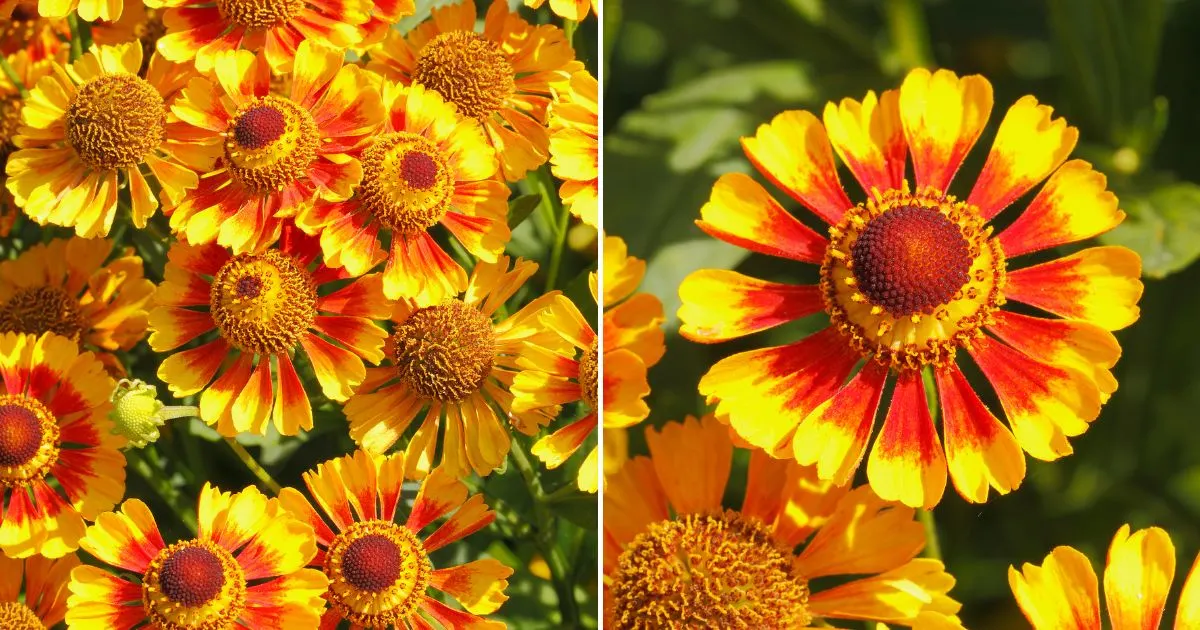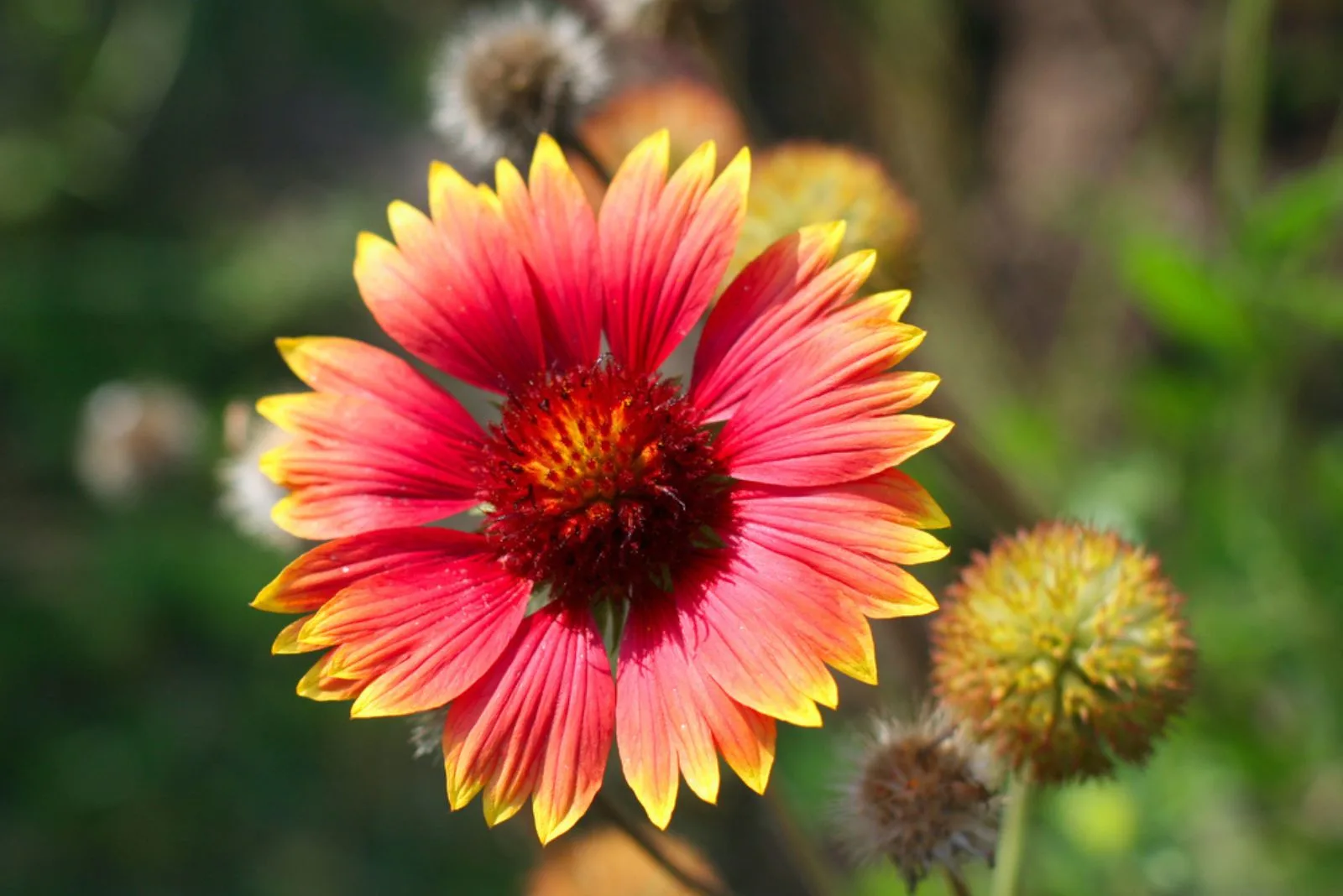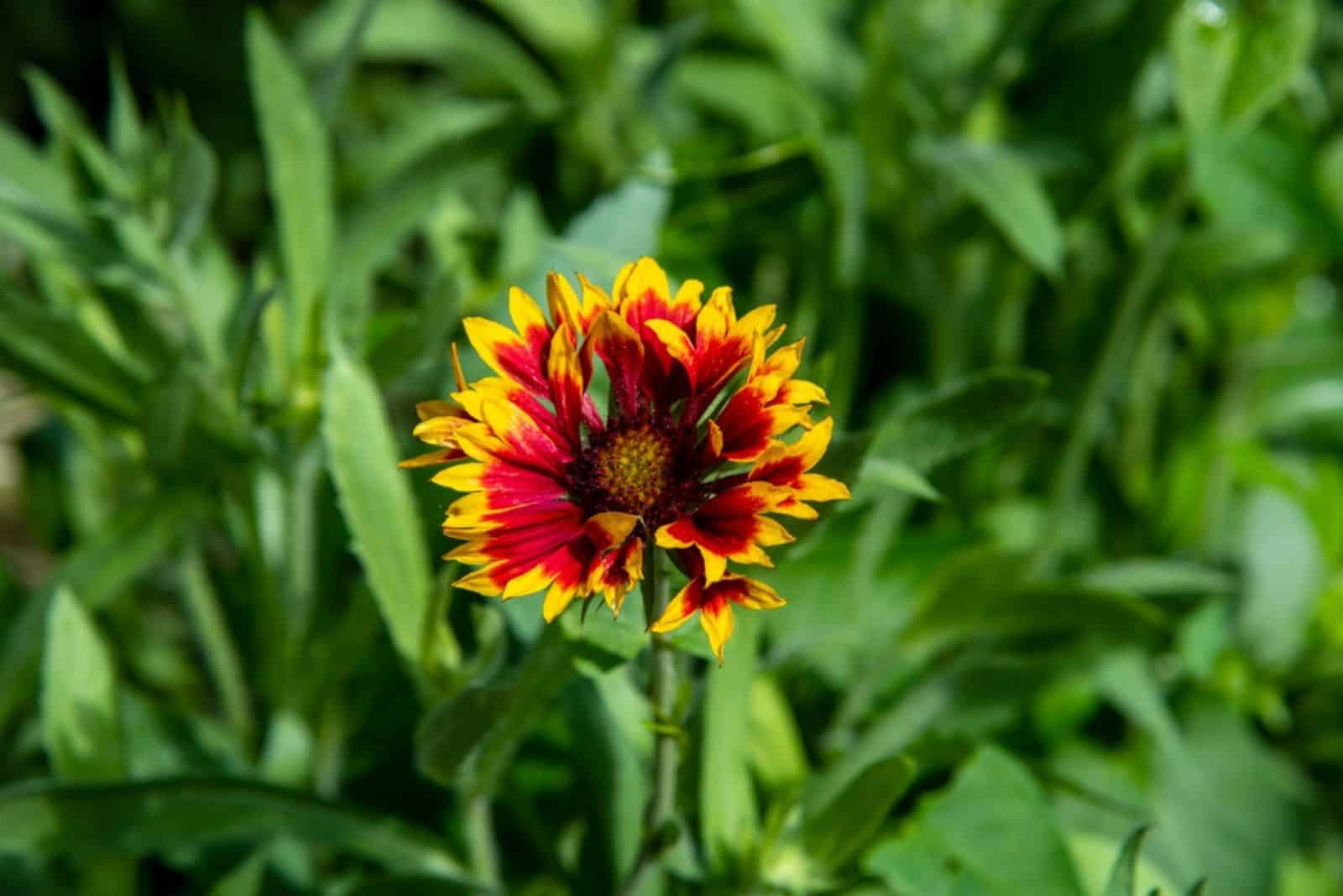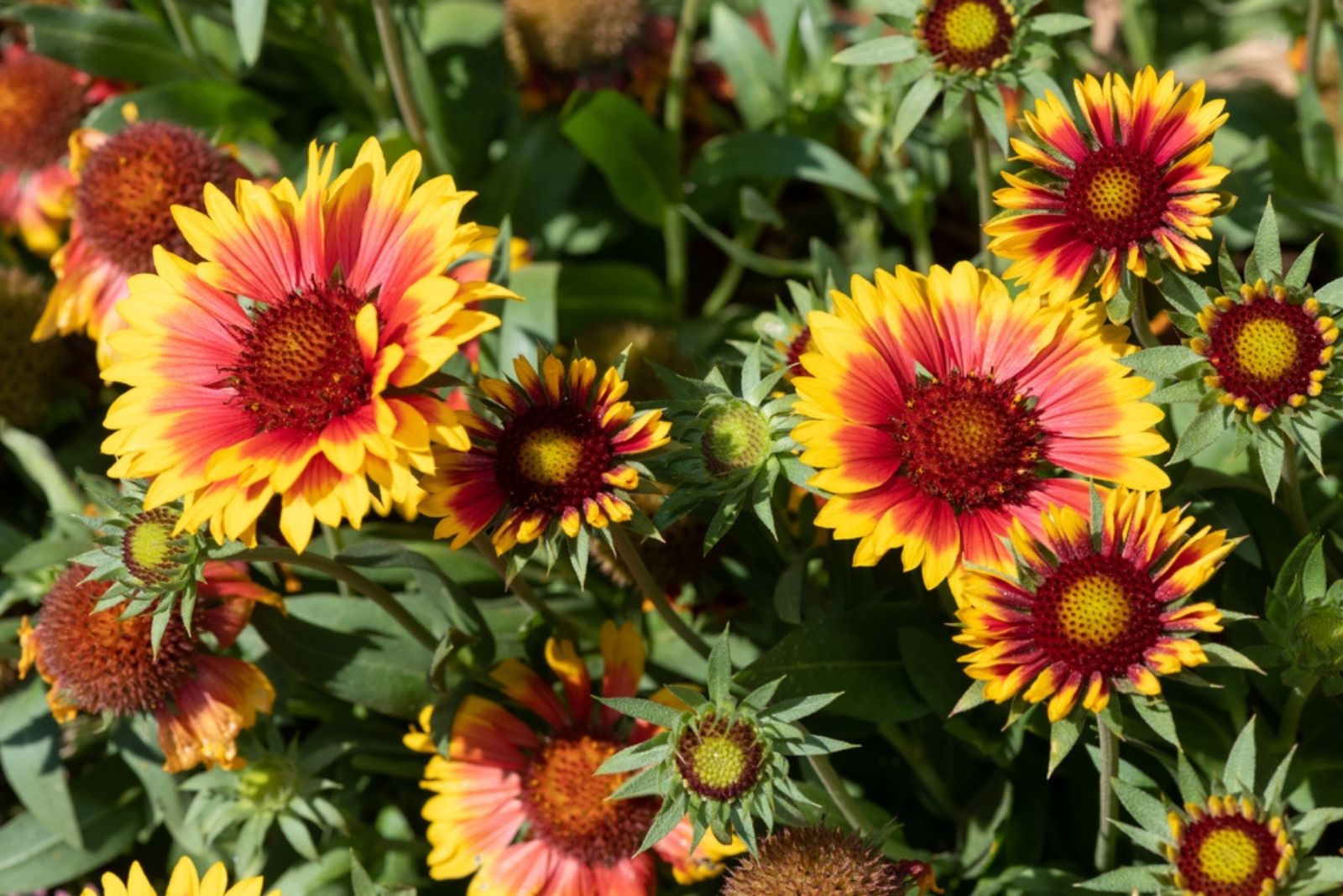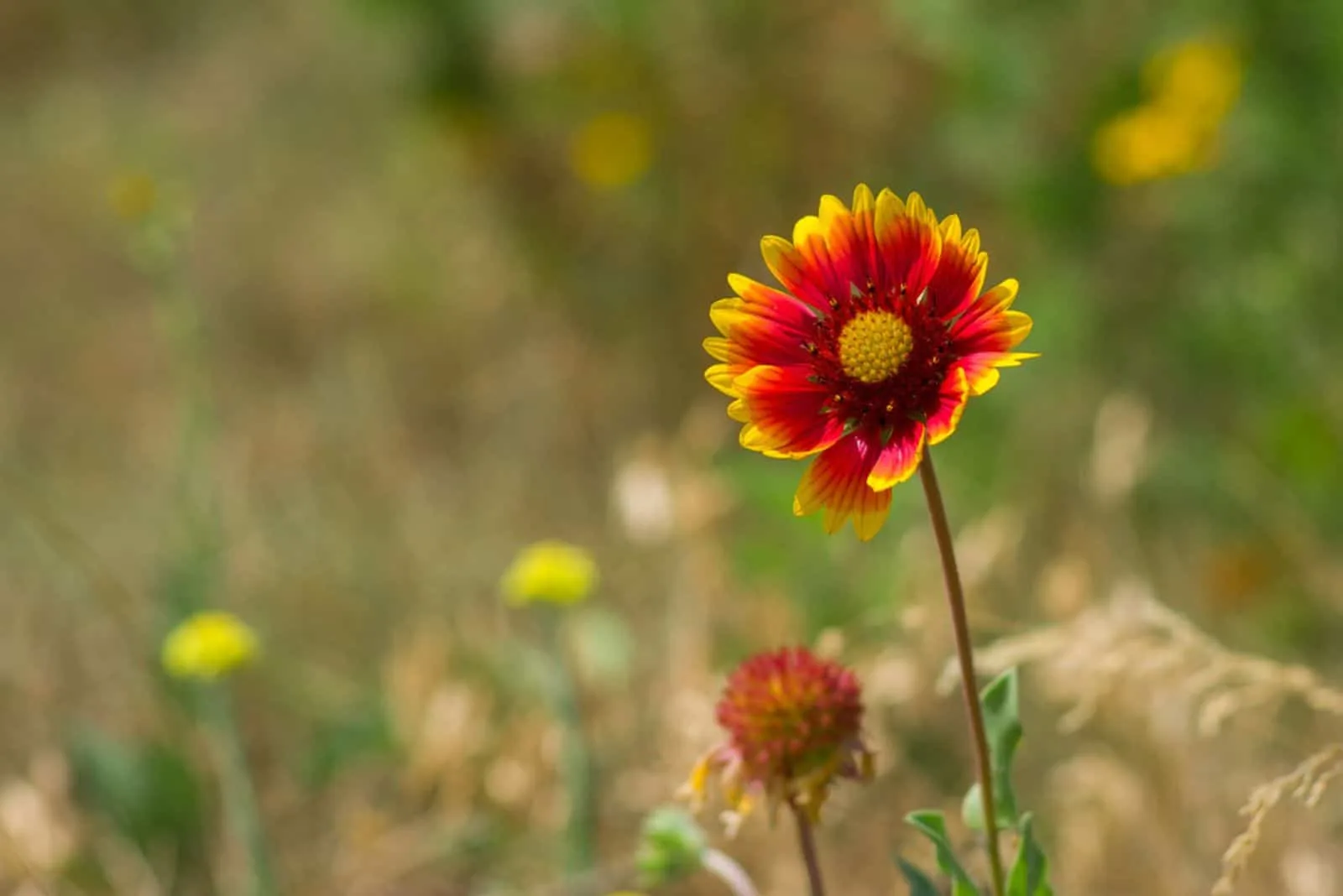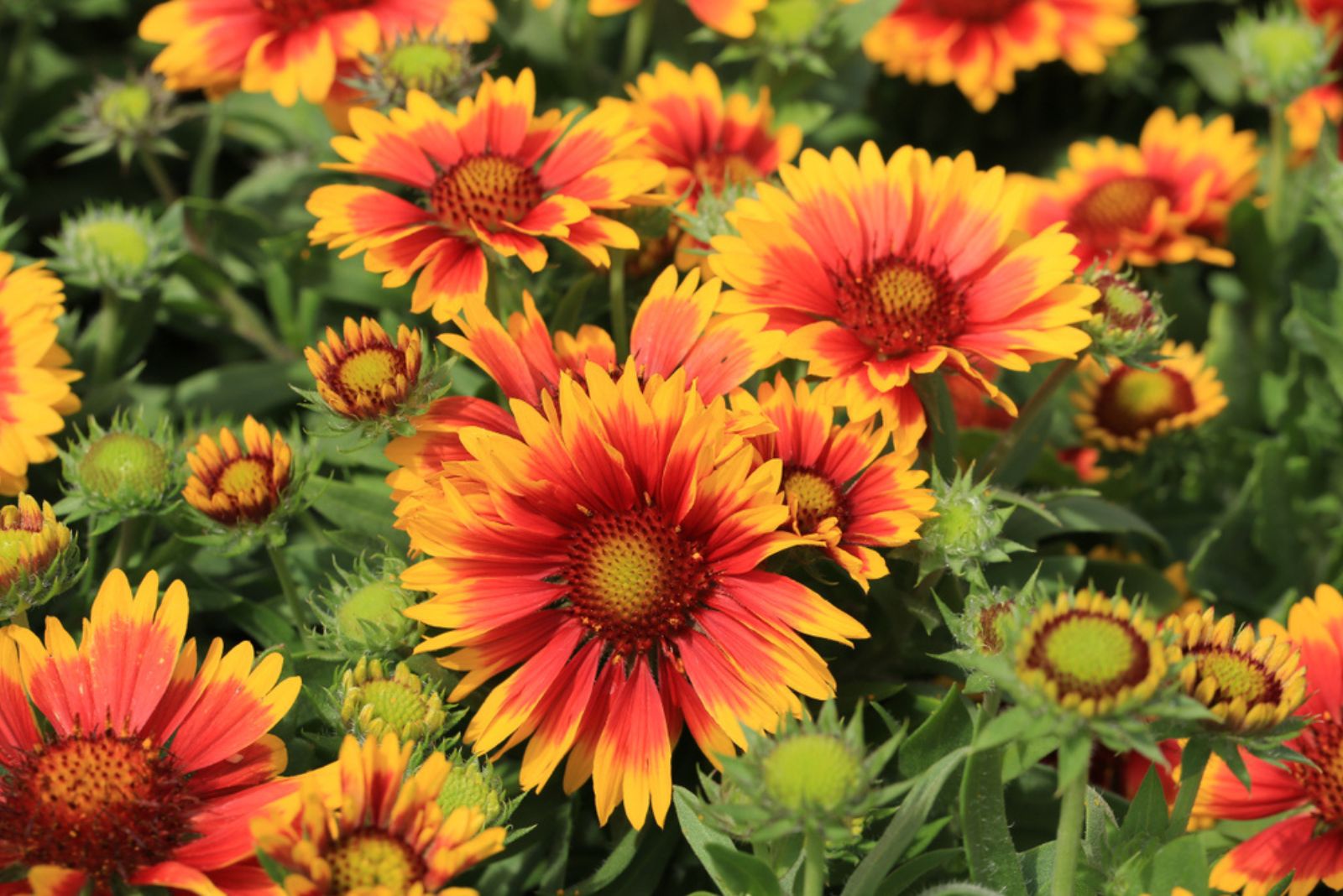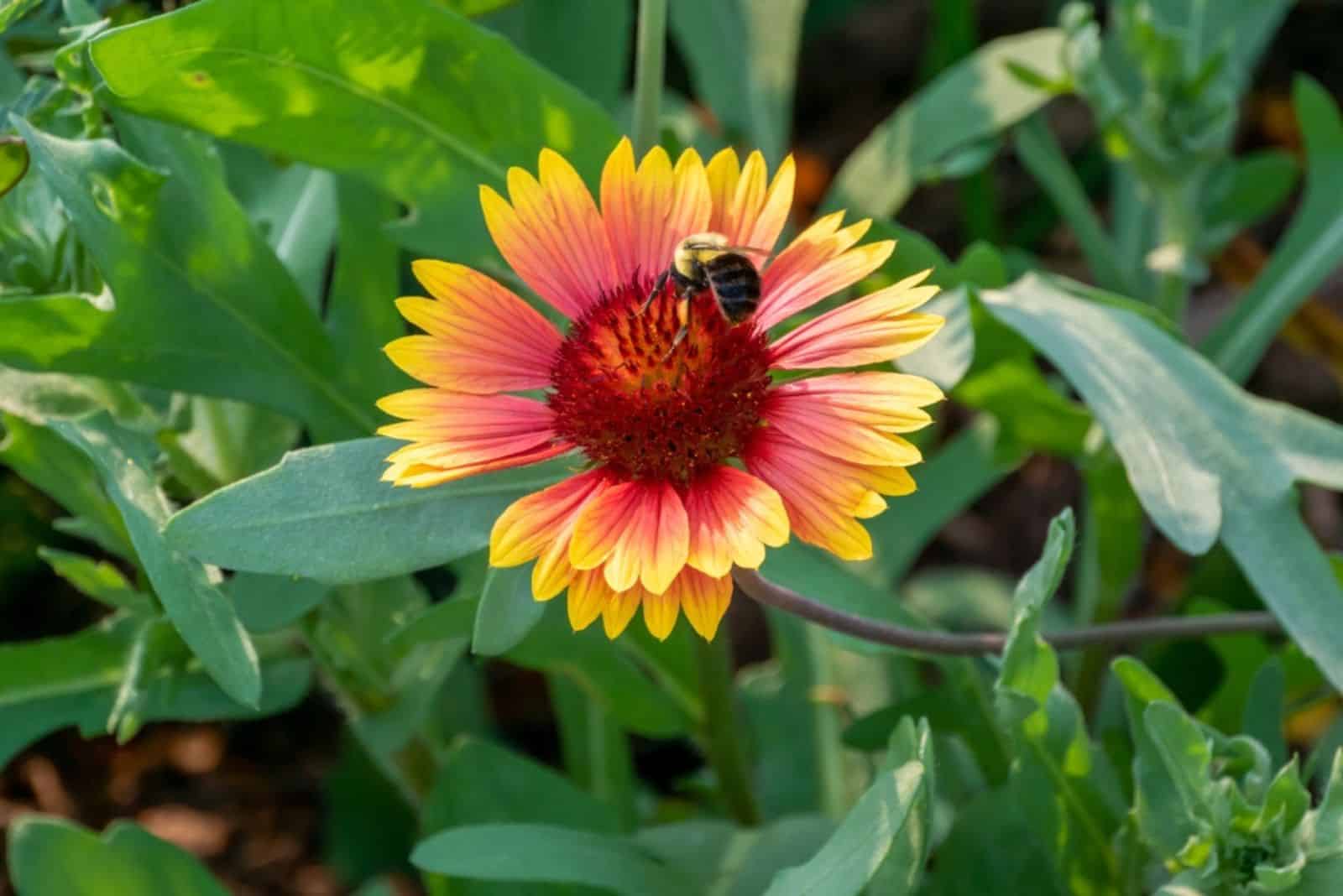Why grow blanket flowers? I asked myself that question many times, as their extraordinary beauty couldn’t be the only reason.
It sprouts all over Florida, so it caught my attention and I started digging. This plant has an extremely long blooming season and it attracts all sorts of pollinators.
And if that’s not enough to make you a gaillardia-fan just yet, I’m willing to go all-out.
Let’s dive in!
1. Blanket Flower Is A Long-Blooming Perennial
Gaillardia is one of the favorite perennials out there because of its long blooming season. It flowers the entire summer and usually well into fall. And in Florida, some species start blooming in mid-spring.
This long season makes it a sight to see and will add visual interest to your garden without you having to try too hard.
The shades they decorate landscapes with are fire red and yellow, but there are orange varieties, too. The most common choice for gardeners all over the world are red and yellow firewheels that flower from summer through fall.
Another thing which makes them highly desirable is that the blanket flowers will readily self-seed, so you won’t have to replant them once they wither away.
You can even grow them in cold climates as annuals, but they’re mostly perennials with a somewhat shorter lifespan.
2. Gaillardia Attracts Numerous Pollinators
You’re more than likely to find blanket flowers on a list of flowers that attract hummingbirds and butterflies.
That’s because their vibrant colors appeal to hummers and buzzers, and their nectar-rich centers make them stay and come back for more. And if you let them go to seed, you’ll notice an increase in the population of goldfinches, sparrows, and other small birds.
Add these fiery plants to your butterfly, meadow, or pollinator gardens for more appeal or add them to your vegetable patch and increase your yield.
3. It Is Easy To Start Blanket Flowers
Blanket flowers grow well from seeds and you can plant them directly into your garden or start them indoors about six weeks before your last spring frost.
The second option will jumpstart your season and give you a garden full of color and life before you’d expect it.
When starting gaillardia indoors, plant it in a moist seed starting mix, lightly cover it with soil, and place a humidity dome or plastic wrap around it to trap moisture in. Once you notice young sprouts, you can move them to a location with indirect light.
After the seedlings get about 6 inches tall, you can move them outside.
Additionally, you can propagate blanket flowers from root cuttings. Therefore, if some of your friends have this plant, you can ask them to share.
4. And Care For Them
Gaillardia is one of the easiest wildflower plants you can grow because it requires virtually no care after it establishes.
It doesn’t need plenty of moisture or fertile soil to thrive. In fact, once you plant it in a full sun location, you can sit back, sip on your ice-cold lemonade, and enjoy its fiery looks.
Blanket flowers are really not demanding and are either native or naturalized in many parts of the US. That means you don’t have to amend your native soil or fertilize them to reach their full potential.
You don’t even have to prune them! You can deadhead the spent flowers to give the plant a fuller look and encourage more blossoms. This will prevent it from producing seeds and ensure more energy for the flowers.
But if you want it to self-seed and rid yourself of tedious planting work in the following years, you can leave a couple of flower heads to go to seed and spread throughout your garden.
Note: If you sow the gaillardia seeds directly outside, ensure you don’t pull them out accidentally. Young plants look similar to dandelions, so let them flower and weed them out then. Or leave dandelions to complement the looks of your blanket flowers.
5. They’re Very Heat And Drought-Tolerant
If you live in a hot and dry region, then this flower is for you. It tolerates heat, drought, sun, and both sandy and salty soils, so it’s perfect for coastal regions. (1)
You can find it on the list of drought-tolerant plants, but you will have to water it a bit more frequently before they establish.
6. You Can Choose From Various Cultivars
Blanket flowers come in different shades, which means there’s one that will fit your gardening design perfectly.
Or you can get them all and create a gaillardia oasis that will turn your garden into a pollinator haven.
Their colors range from burgundy to vibrant orange and yellow, with mono or multi-color combos.
Gaillardia pulchella – This variety is the most common blanket flower out there and it takes about three months from seed to flower. It grows up to a foot tall and has brick-red petals with yellow tips.
Gaillardia aristata – Brown-red centers, deep red petals, and yellowish tips merge into a cacophony of colors in a single flower. This perennial can get up to 3 feet tall given the right conditions.
Gaillardia x grandiflora – This species is a hybrid between G. pulchella and G. aristata with numerous cultivars.
‘Arizona Apricot’ with vivid yellow petals that turn orange towards the center, and ‘Arizona Red Shades’ with its brick-red petals and barely noticeable yellow tips are some of the most popular cultivars.
The all red ‘Celebration,’ ‘Fanfare’ with its unique petals, and peach-colored ‘Oranges and lemons’ are also popular choices.
And if you want more stable shades, then try some Mesa cultivars, such as ‘Mesa Yellow,’ ‘Mesa Peach,’ or ‘Mesa Red.’
7. Its Native Or Naturalized In The US
Planting natives is very important as they benefit the entire ecosystem. They won’t spread all over your yard, choking other plants, and will attract numerous pollinators.
Blanket flower is native in most western states, parts of New England, the upper Plains, and around the Great lakes. (2)
This plant is also naturalized in many North American regions and all over the world, which means it’s not invasive and won’t choke out your other plants.
And when it comes to the hybrid species, it’s good to know that they were first produced in Belgium in 1857 and are not invasive. (3)
So tell me, why not add a couple of these fiery beauties to your garden?
References:
1. Gaillardia (n.d.). UF/IFAS, Gardening Solutions.
2. Owen, W. (n.d.). Plant of the Week: Blanketflower (Gaillardia aristata). USDA, US Forest Service.
3. Mahr, S. (n.d.). Blanket flower, Gaillardia spp. UW-Madison, Wisconsin Horticulture Division of Extension.

